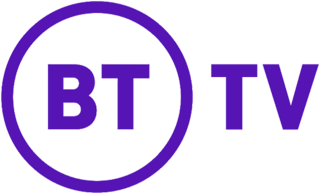Television in the Netherlands was officially introduced in 1951. In the Netherlands, the television market is divided between a number of commercial networks, such as RTL Nederland, and a system of public broadcasters sharing three channels, NPO 1, NPO 2, and NPO 3. Imported programmes, as well as news interviews with responses in a foreign language, are almost always shown in their original language, with subtitles.
Television stations in Slovakia broadcast in both DVB-T format and DVB-T2 format. Broadcasting is mostly in the Slovak language, state owned channels have some dedicated broadcasting for ethnic minorities. Foreign language movies and shows are dubbed. Czech production is often broadcast in original, with the exception of juvenile programs. Sometimes, foreign language movies are broadcast with Czech dubbing. Czech television channels are also popular in Slovakia, received in paid DVB-T2 service, directly in border regions or carried by cable companies and satellite operators. Most of premium channels like Filmbox, HBO, Viasat Channels, etc. broadcast only in Czech language. Discovery, Sport 1, Sport 2 and few others are exception, they broadcast in both Czech and Slovak.
Canal Digital was a Nordic pay TV and internet service provider in Norway, Sweden, Denmark and Finland that was founded in March 1997 as a joint venture between the French pay TV company Canal+ and the Norwegian telecommunications operator Telenor.
Television in Serbia was introduced in 1956. It remains the most popular of the media in Serbia—according to 2009 survey, Serbian people watch on average 6 hours of television per day, making it the highest average in Europe.

NTV Plus is the brand name for the Russian digital satellite television service from NTV, transmitted from Eutelsat's W4 satellite at 36.0°E and from Bonum 1 at 56.0°E. Previously a part of Vladimir Gusinsky's media empire, now it is included in the Gazprom Media holding.

BT TV is a subscription IPTV service offered by BT; a division of United Kingdom telecommunications company BT Group, and was originally launched as BT Vision in December 2006. As of the end of June 2019, BT TV had 1.9 million customers.
Telia Digital TV is an IPTV distribution platform in Sweden owned by Telia Company. It was launched in January 2005 from a few locations.

Primetel PLC is a Cyprus telecommunications company that offers and develops Voice, Data and Video services. The company owns and operates a truly regional network, spanning across Cyprus, Germany, Greece, Russia and the United Kingdom, providing city-to-city connectivity, data communications, fiber optic fixed network infrastructure and IP-based services between key European and Middle East markets. Primetel is one of the few telecommunications operators in the region that can provide a full spectrum of connectivity and services.
Television in Cyprus was introduced in 1956. In 1957, CyBC was created. Private TV was introduced on 26 April 1992, by Logos TV which started its transmissions in stereo and Teletext from day one. The first private TV station of Cyprus was owned and operated by the Church of Cyprus. In August 1995, the same station introduced the first internet service provider in Cyprus, LOGOSNET. The Republic of Cyprus currently uses the PAL colour system and has converted terrestrial transmissions to digital on 1 July 2011, in line with EU policy. Because of the political division of the island, television companies are also divided.
The Netherlands now has three major forms of broadcast digital television. Terrestrial (DVB-T), Cable (DVB-C), and Satellite (DVB-S). In addition IPTV services are available. At the end of the first quarter of 2013 almost 84% of the households in the Netherlands had some form of digital television.
Television in Romania started in August 1955. State television started to broadcast on December 31, 1956. The second television channel followed in 1968, but between 1985 and 1990, there was only one Romanian channel before the return of the second channel. Private broadcasters arrived in December 1991, with SOTI which was the first private nationwide television station in Central and Eastern Europe. Romania has the highest penetration rates for pay television in the world, with over 98% of all households watching television through cable or satellite.
Telecommunications in Cyprus includes radio, television, fixed and mobile telephones, and the Internet, in the Republic of Cyprus.
MAD TV Cyprus is a digital music channel and the Cypriot version of MAD TV Greece, launched on July 1, 2011.
Telemach is the leading cable television and broadband internet service provider, and the largest alternative fixed line operator in Bosnia and Herzegovina. The company is owned by British company BC Partners.
Super TV is the first Bosnian IPTV provider, owned by Logosoft.
Wind Vision is a digital television service introduced by WIND Hellas in April 2018. It is based on a Broadband IPTV infrastructure, where digital sound and vision is carried through a telephone line to a Set-Top Box and the customer’s TV. On 25 April 2018, Wind CEO Nassos Zarkalis introduced the company's IPTV service.. It is the first Android TV set-top-box in Greece with Netflix integrated. Also, it is the first service offering 4KTV resolution with HDR 10 technology.



